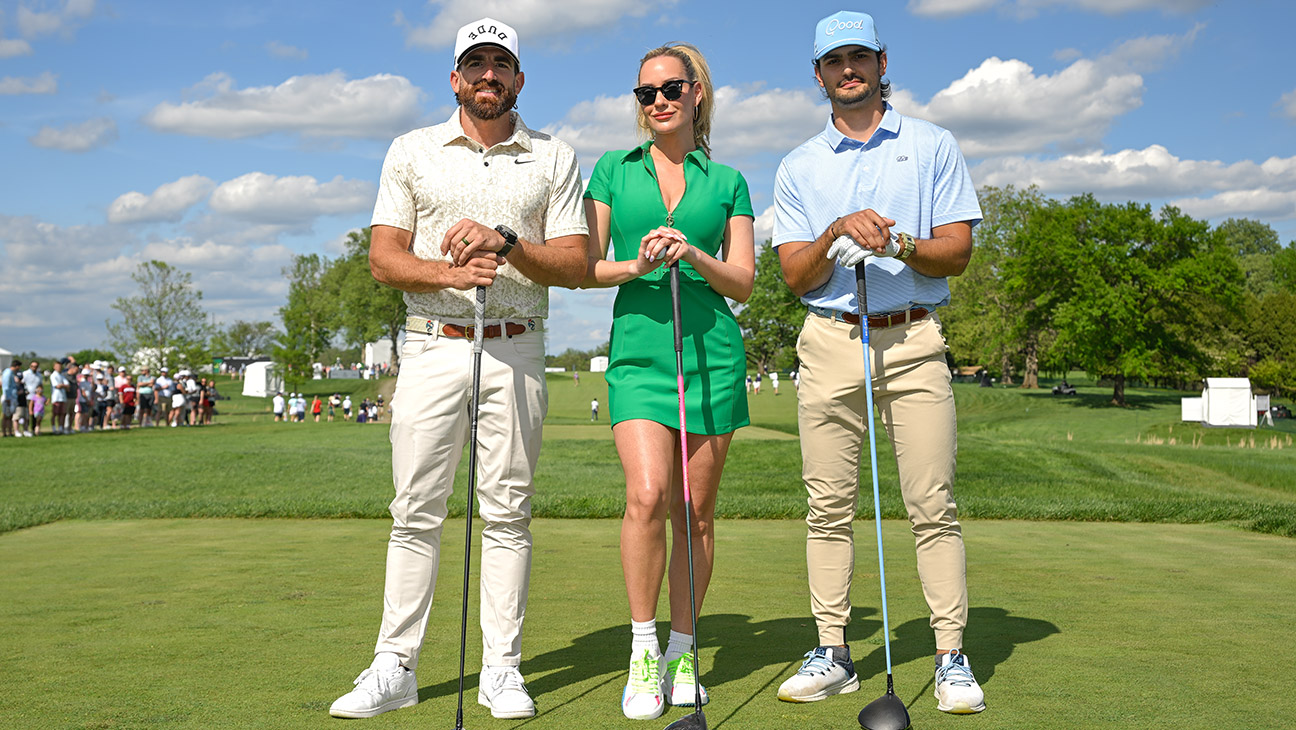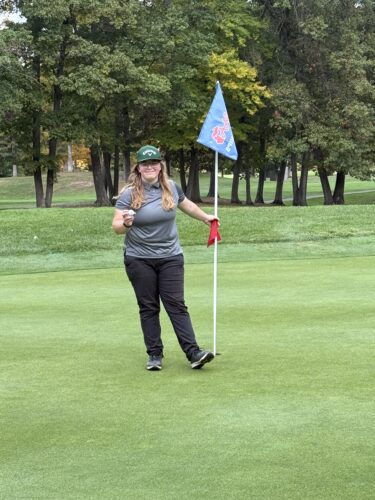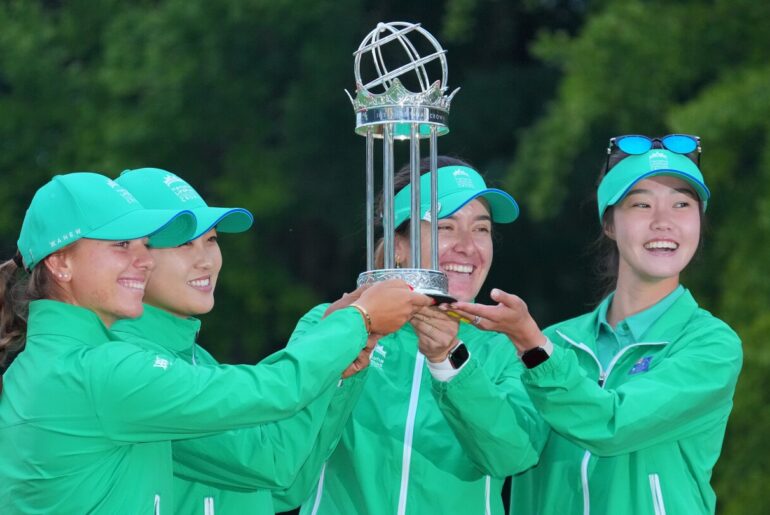Golf hasn’t been this cool since Tiger Woods’ major-championship dominance led to the phrase “The Tiger Slam.”
YouTube Golf may not be an official subsection of the platform, but the rapidly growing genre has become a proper noun among viewers. There are subsets within the subset, including entertainment golf, focused as much on the personalities, relationships and hijinks of the guys (it’s almost always guys) creating the content, like Good Good (1.9 million subscribers), Bob Does Sports (1.1 million subscribers) and Barstool Sports’ Fore Play (540,000 subscribers), and instructional videos from Rick Shiels (3 million subscribers), Peter Finch (752,000 subscribers) and Mark Crossfield (489,000 subscribers).

Barstool Sports Fore Play
Screenshot/YouTube
Even top-tier tour pros are in. The single-biggest benefactor of — and contributor to — YouTube Golf is almost certainly LIV star Bryson DeChambeau, who’s used the platform to rehabilitate his unflattering image (a guy previously known for slow, analytical play and poor sportsmanship now boasts 2.3 million subs).
YouTube launched in 2005, and golf has long existed on the platform — which now accounts for 13.4 percent of all TV usage, per Nielsen — but for years it was your daddy’s YouTube Golf. “At the time, the YouTube Golf space was mostly just British teaching instructors telling you how to fix your swing,” says Adam Fine, who goes by Not a Scratch Golfer (68,000 subscribers).

Rick Shiels
David Cannon/Getty Images
But gone are the days of stuffy, mechanical playing lessons professionally filmed in a generic studio or, if you were lucky, on a driving range. The new crop of YouTube golfers is young, personality-driven and cross-collaborative. The courses are high-end and empty (for ease of filming), the fellas are loud, loose and funny, and the rounds favor short, team-based formats fueled by booze and challenges. In some of the videos, we see more of the players off the course than on. Most of the shirts remain untucked.
“The 18-hole golf logs have gone out the window,” says Matt Bybis Sanovabicius (aka Golf Sidekick with 369,000 subscribers) . “People used to be really be into them, but with the high-dopamine, quick-fire content they’re making, now you have to adapt.”
YouTube Golf as we know it today was born of the COVID shutdowns. “I was just bored during the pandemic,” says Fine, “and I wanted some sort of outlet while playing golf to feel more productive.”
Good Good Golf launched at the same time — and it launched into the stratosphere. Matt Kendrick, the founder and CEO, basically copied and pasted his business plan from fishing brand Googan Squad (1.1 million subscribers): Launch a YouTube channel, make merch and expand into an e-retailer. Good Good is now a hugely successful golf lifestyle brand with 75 percent of its monthly revenue coming from apparel.

Garrett Clark of Good Good Golf
Keyur Khamar/PGA TOUR/Getty Images
Fine and Bybis Sanovabicius teach, as Fine puts it, how “to think through golf.” It’s instructional — but practical, not technical. Their message is substance over style, though style is not completely out of Bybis Sanovabicius’ wheelhouse. He turned fan demand to see his catchphrase “waddaplaya” on a golf shirt into a merch business that now includes shirts, hats, divot tools and putters. Waddaplaya has become nearly a third of his revenue.
Who is buying and consuming all of this? Well, golfers of course, and almost exclusively men. Fine’s YouTube audience is more than 98 percent male, the overwhelming majority of whom are 25 to 54. It’s a demographic with money and one that is very attractive to advertisers.
“I’m in a niche within a niche,” Fine says. “There are channels that get literally 100 times the views I do that make less money.” Even if he does not venture into apparel, Fine says he sees a path to making $1 million annually within the next few years.

Bryson DeChambeau
Angel Martinez/Getty Images
Paige Spiranac, a pro golfer turned model and golf influencer, has 4 million Instagram followers and is one of the most popular creators on Passes, an OnlyFans-esque website. She has 453,000 subscribers on YouTube.

Adam Fine: Not a Scratch Golfer
Screenshot/YouTube
Spiranac credits her biggest platform, Instagram, for birthing YouTube Golf. There, “trick-shot golf” gained momentum, she says. Her revealing golf attire also probably didn’t hurt. Jake Hoselton, a co-founder of par-3 league Grass League (which now employs Spiranac), says that creator golf “has taken over the social sphere of the game” and predicts that the “style” of YouTube Golf will “ultimately take over” the sport itself.
“YouTube has just done a much better job of engaging with the players and the personalities than with the swing thoughts and the club selection and the strategy,” Hoselton says. “The way that golf has traditionally been broadcast is just not built for the new consumer.”
This story appeared in the Aug. 20 issue of The Hollywood Reporter magazine. Click here to subscribe.







